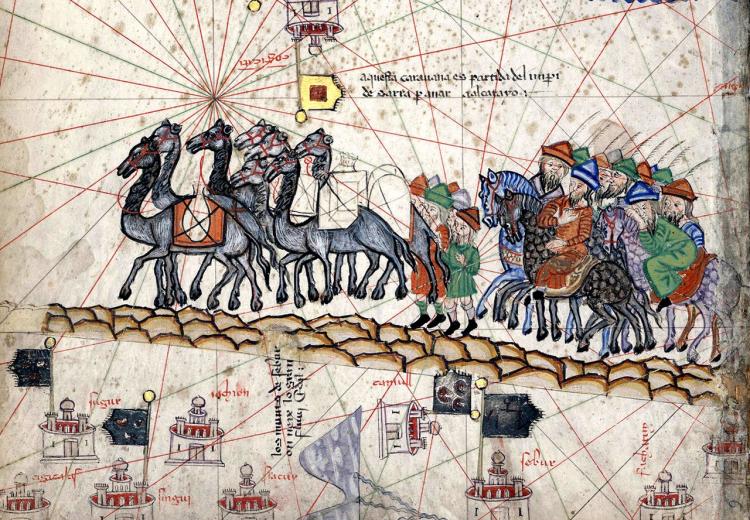Lesson 3: On the Road with Marco Polo: From Hormuz to Kashgar

A 14th century painting depicting Marco Polo's caravan traveling along the Silk Road.
In the 13th century, a young Venetian named Marco Polo set out with his father and uncle on a great adventure. Following a series of trade routes, they traveled across the vast continent of Asia and became the first Europeans to visit the Chinese capital (modern Beijing). Marco so impressed the reigning emperor of China, Kublai Khan, that he was appointed to the imperial court. For the next 17 years, Marco was sent on missions to many parts of Kublai's sprawling empire. The Polos finally returned to Venice via the sea route. Marco later wrote a book about his experiences, which inspired new generations of explorers to travel to the exotic lands of the East.
Guiding Questions
How did Marco Polo's journey affect the economies and cultures of the places he traveled through?
Why does Marco Polo's journey remain important today?
Learning Objectives
Analyze maps, images, and other visual sources to understand the relationship between geography of China, Central Asia, and the Silk Road and Marco Polo's journey.
Evaluate the significance of Marco Polo's journey on the economics and cultural institutions of the places he visited.
